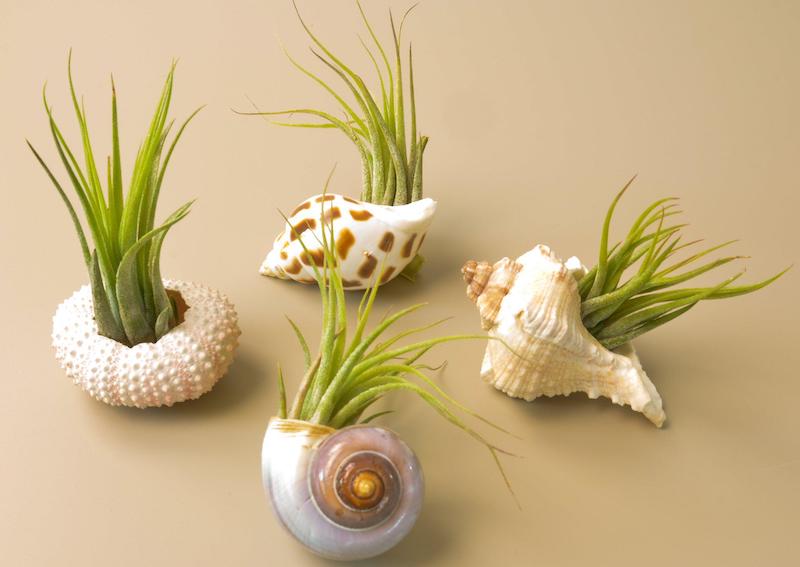The requirements for keeping Air Plants happy and growing well are few: bright indirect light in a spot that stays warm and relatively humid. Air Plants do not have specific needs for pH level or fertile soil because in their native habitats, these plants attach themselves to other plants by way of their fine roots. The foliage has specialized structures to extract moisture and nutrients from the atmosphere, be it a jungle or desert climate. Even though Air Plants do not need a container of potting soil to grow, they can be used in many different ways to decorate your indoor or outdoor space.

Potting Air Plants
Air Plants do best when placed in an area with high humidity and bright indirect light. Bathrooms and kitchens are great choices, as is an area with other houseplants. When plants are placed in groupings, they help each other regulate humidity levels. Air Plants can be placed in the branches of larger tropical plants or placed atop a display of seashells or rocks in shallow dishes or large terrariums. As long as the plants have plenty of air circulation and can be easily watered when needed, there is no limit to how Air Plants can be displayed. The plants can be attached to pieces of bark and other plants by securing them gently with wire, fishing line, low-temp hot glue, or staples as long as the fleshy leaves are not damaged. Super Glue is not recommended as it can harm the plants. Do not use copper wire as it also affects Air Plants negatively.
Repotting Air Plants
Air Plants do not need repotting in the traditional sense. The root systems of Air Plants do not get root bound or need more space to spread. Some of the larger growing varieties may need to be rehomed if they outgrow their display area or produce many offset pups. Most types of Tillandsia grow happily for years staying almost the same size and bloom only when they are a few years old. Once these types flower and produce a set of pups, they will die within months. There are a few varieties that will produce pups for years, not being affected by blooming. The pups are easily separated and used on their own once they have reached about one-third the size of the mother plant.

Best Soil For Air Plants
Air Plants must never be planted in soil. The roots on an Air Plant do not perform the way roots on other plants do. The only function Air Plant roots have is to attach themselves to other plants or act as an anchor for plants that grow in the sand on the desert floor. Air Plants take nutrients and water in by their fleshy leaves. For decorative purposes, Air Plants will tolerate sitting on top of or just below the surface of sand in terrariums or decorative bowls.
Air Plant Drainage
Allowing for good air circulation around Air Plants is essential to their longevity. After watering, the plants will need some time to dry out to avoid fungal issues. The best way to do this is to place the Air Plant upside down on a towel for 1-2 hours until all of the water has drained. An Air Plant that appears to be sweating, with small beads of water on its leaves, is far too wet and needs to dry out before being replaced in any container that would trap the excess moisture, such as a terrarium.
This page contains affiliate links to products on Amazon. We may receive a commission for purchases made through these links.
 |
Author Robbin Small - Published 3-21-2023 |
